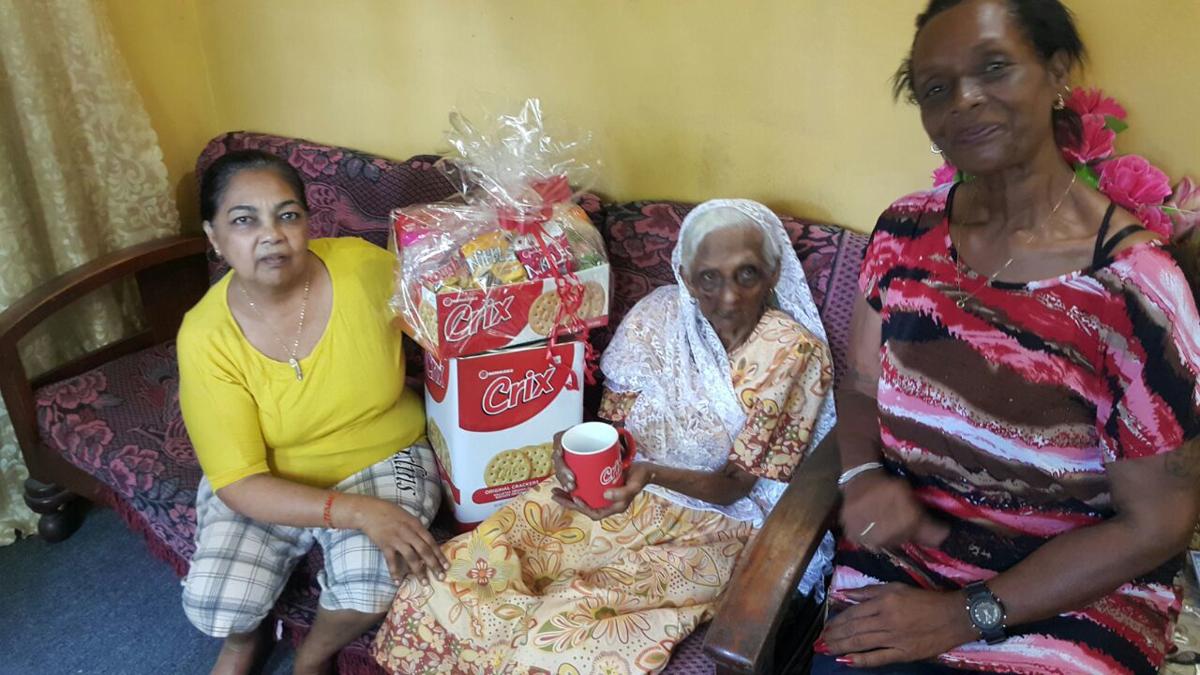 LAST month, 100-year-old Jasso Sookram told us the health benefits of her favourite food - Crix crackers. On Monday, the Bermudez Biscuit Company paid her a visit. Jasso lives of Mount Stewart Village, Princes Town. According to granddaughter Gloria Sinanan, one of her favourite thing to eat is Crix and she would always tell her relatives to “eat Crix so you wouldn’t get wind.” Managing Director at Bermudez, Ingrid Lloyd read the story and contacted the Express, hoping to provide a hamper on Jasso’s milestone birthday. A Company representative visited her home. Sinanan said Jasso was thrilled to be presented with the products. She said: “She was so happy. She spoke with the young man who came and told him about her life and how hard she worked. He was very nice to her calling her ‘darling’ and she wished him well before he left. He also wished her many more years. This is a wonderful thing and I really want to thank them for this.” Jasso worked as a cane farmer on the Caroni Estate and to date, does not suffer from any ailments. She is a devout Hindu and attributes her long life to living well with others and her dedication to God. Her life’s philosophy is to work hard and live peacefully with everyone Source: Daily Expess +1
0 Comments
From his first creation of curried chicken at age eight, to booking one of the top 12 spots on Season 5 of MasterChef Canada, Trinidadian Jonathan Rahim is just getting started.
Originally from Port-of-Spain, Rahim moved to Canada as a young child and now resides in Winnipeg. Growing up in the northern climate, however, did not change his love for West Indian flavours which continue to feature prominently in his dishes. The 33-year-old real estate agent, who has always had a knack for cooking, wowed judges with his audition dish of Ghost Pepper Stew Chicken with Rice and Peas, and Mango Slaw on the season’s first episode which aired on April 3, 2018. Chef and Restaurateur Alvin Leung was immediately impressed by the heat of the dish, which he said complemented the sweet flavour of the stew. “The taste is amazing. I get that very sharp heat from the ghost pepper, but it’s being neutralised by the sweetness of the sauce. It’s a very balanced dish,” Leung told a beaming Rahim. Fellow judges Claudio Aprile and Michael Bonacini shook their heads in agreement. Leung then surprised the Trinidadian-Canadian with an apron with his name printed in red across the front, signifying that he had secured his spot on the show. Rahim, whose dream is to take a culinary tour of the world is determined to succeed during his time on MasterChef Canada. Source: The Loop Prime Minister Theresa May has apologised to Caribbean leaders over the Windrush generation controversy, at a Downing Street meeting. She said she was "genuinely sorry" about the anxiety caused by the Home Office threatening the children of Commonwealth citizens with deportation. The UK government "valued" the contribution they had made, she said, and they had a right to stay in the UK. It comes amid reports some are still facing deportation. The deportation of one man, which had been due to take place on Wednesday, has been halted following an intervention by Labour MP David Lammy. The Tottenham MP said the mother of 35-year-old Mozi Haynes got in touch saying her son was due to be removed from the country after two failed applications to stay. Mr Lammy later tweeted that he had been contacted by Immigration Minister Caroline Nokes, who had said that Mr Haynes would not now be deported on Wednesday and his case was "being reviewed". The Tottenham MP, who has called the controversy a "national disgrace," urged the children of the Windrush generation facing deportation to contact him, promising "justice will be done". Mr Lammy said that of 12,056 deportations in 2015, 901 were over 50 years of age. and 303 were to Jamaica. He is calling on the Home Office to review all such cases since 2014 to "ensure no wrongful detentions have taken place". The Home Office said it was making efforts to speak to Mr Haynes to advise him that there is no requirement for him to leave the UK. Officials say it is not a Windrush case and was never an "enforced removal". The department said it was looking at 49 cases relating to Windrush migrants as a result of calls received on Tuesday. Landing cardsA former Home Office employee has, meanwhile, told The Guardian that thousands of landing card slips recording Windrush immigrants' arrival dates in the UK were destroyed in 2010 during an office move. The former worker, who is not named by the newspaper, said managers were warned by staff that destroying the cards would make it harder to check the records of older Caribbean-born residents experiencing difficulties proving their right to remain in the UK. The government said the decision to "dispose of" the cards had been an "operational" one, taken by officials at the UK Border Agency, rather than the then Home Secretary Theresa May. A Home Office spokesman said: "Registration slips provided details of an individual's date of entry, they did not provide any reliable evidence relating to ongoing residence in the UK or their immigration status. "So it would be misleading and inaccurate to suggest that registration slips would therefore have a bearing on immigration cases whereby Commonwealth citizens are proving residency in the UK." The prime minister's spokesman said things like school records, exam certificates, employment records and bills were seen by the Home Office as "more reliable evidence of ongoing residence". In her apology to Caribbean leaders, Theresa May said she wanted to "dispel any impression that my government is in some sense clamping down on Commonwealth citizens, particularly those from the Caribbean who have built a life here". She said the current controversy had arisen because of new rules, introduced by her as home secretary, designed to make sure only those with the right to remain in the UK could access the welfare system and the NHS. "This has resulted in some people, through no fault of their own, now needing to be able to evidence their immigration status," she told the foreign ministers and leaders of 12 Caribbean nations in Downing Street. "And the overwhelming majority of the Windrush generation do have the documents that they need, but we are working hard to help those who do not." Prime Minister of the Republic of Trinidad and Tobago Dr the Hon.Keith Rowley and Prime Minister of Canada, the Hon. Justin Trudeau pause for an official photo after the Commonwealth Heads of Government meeting April 18 Prime Minister Dr the Honourable Keith Rowley raised the issue of countries making inaccurate pronouncements on Trinidad and Tobago saying that this practice has an adverse effect on the nation’s ability to stimulate growth and development. The Prime Minister was speaking at the Commonwealth Business Forum (CBF) Heads of Government Roundtable today (April 18, 2018) when he made the comment.
The Prime Minister noted that Trinidad and Tobago pursues tourism as a viable industry for growth and development. However, when some nations issue negative travel advisories on incidents of crime, efforts made in the industry are stymied. Dr Rowley also raised the subject of the categorisation of several Caribbean nations, including Trinidad and Tobago, as tax havens. This, even though the twin-island state continues to make significant steps towards fulfilling the requirements of the European Union and is FATCA compliant. The Heads of Government Roundtable is the concluding set piece of the Business Forum that allows the business community to provide feedback directly to Heads of Government in order to inform discussions at the Heads of Government Meeting. Earlier in the day Prime Minister Rowley paid a courtesy call on His Royal Highness Prince Andrew, the Duke of York at Buckingham Palace. He was accompanied by Minister of Foreign and CARICOM Affairs, the Honourable Dennis Moses, Minister in the Office of the Prime Minister and Minister in the Office of the Attorney General and Ministry of Legal Affairs the Honourable Stuart Young, Trinidad and Tobago’s High Commissioner to the UK, His Excellency Orville London and Press Secretary to the Prime Minister, Ms Arlene Gorin-George. Dr Rowley also attended a meeting with the Prime Minister of Canada, the Honourable Justin Trudeau. The meeting saw participation from leaders of Commonwealth Small Islands and Coastal States on the subject of oceans, coastal resilience and climate change. Some of the issues raised by the leaders at this meeting included the need to increase capacity of small island and coastal states to respond to climate change and the significant cost associated with protecting the environment. They also raised the need for building clear development pathways for small island states. Yunus (Jonas) Muhammad Bath The Story of Muhammad Sisei (1788 – 1838)The following story has its roots in Manding Muslim civilization which dominated West Africa for three hundred years and stretched from beyond Timbuctu to the Atlantic. It helps to explain why Muslims in Trinidad are still called ‘Madingas’. IT IS A WELL-KNOWN fact that the first Muslims to come to Trinidad were from West Africa although. hardly anything is known about the nature of their presence and the extent to which they observed Islam. In the majority of cases, if anything, they must have been forced through the disabilities inhumanities of the European slave plantation system either to observe their religion in secret or to renounce it altogether. The process can be better appreciated when compared with slave experiences in other islands of the West Indies and in the Americas which is highlighted in ROOTS, the monumental work of the American writer, Alex Haley1. The history of these early Muslims’ in Trinidad is still largely obscure and the following is an attempt to cast a ray of light on this ‘area of darkness’. It is largely based on the researches of Carl Campbell published in the journal of the African Studies Association of the West Indies. Up to the early nineteenth century, there was a thriving Muslim community in Port of Spain led by one Yunus (Jonas) Muhammad Bath. Their numbers were increased by Africans who had served in the British West Indian Regiment during the Napoleonic wars. On being disbanded, some were settled in Port of Spain and some in south Trinidad but most of them apparently were given lands in Manzanilla in the north east of Trinidad. Those in Port of Spain at least petitioned the British government to return to Africa but did not succeed. One of them, however, did succeed in returning to Africa, via England, and his story certainly makes fascinating reading. His name was Muhammad Sisei. Muhammad Sisei was born about 1788 or 1790 in the Gambia. He belonged to the Mandingo people of the area, the ‘majority of whom were perhaps Muslims at the time. His father’s name was Abu Bakr (after the first successor to Prophet Muhammad) and his mother was called Ayishah (after the name of the Prophet’s wife). Sisei’s birthplace was Niyani-Maru, a village on the north bend of the river Gambia, about 100 miles upstream from the Atlantic. At the age of eight Sisei was sent some distance away to Dar Salami (Dasilami) which was one of. the centres of Islamic learning in the Gambia. There were many such places in the Gambia at the time, many of which were set up by Muslim merchants on their trading journeys through West Africa. This is one of the main ways in which Islam was spread in the region. At Dar Salami, Sisei learned to read and write Arabic and he studied the Qur’an. It is said that the writing there was done on paper which was highly prized by the Muslims. This fact acquires importance when it is remembered that literacy has been one of the greatest gifts of Islam to Africa and indeed to many other parts of the world.Sisei stayed at this school for eight years, that is until the age of about sixteen, and he returned to his hometown around 1804.. For a time after this he is said to have travelled somewhat extensively even making a journey (in1805) by sea from his hometown which was a shipping port to the French colony of Goree. The purpose of this journey was trade and perhaps to secure presents for his intended wife for it was around this time too that he was married to a cousin named Aiseta. He now settled in his hometown, setting up a school and no doubt teaching what he had learnt in Dar Salami. For five years, from1805 to 1810, he continued in this satisfying life, helping, through his teachings, to consolidated and spread Islam in the area. But the early nineteenth century was a time of great unrest in West Africa and the Gambia in particular. Apart from the Anglo-French rivalry, there were wars between rival local chiefs. It was one of these local wars which brought Sisei’s career as a teacher to an end. Rival chiefs were seeking to gain control of the banks of the Gambia river. One such chief was repulsed in the Upper Gambia and retreated downstream to increase his forces. He attacked Sisei’s hometown and along with others Muhammad Sisei was captured. He was marched as a prisoner of war to Kansala where he spent five months and then to the port town of Sikkah. There he was sold to a French slaver which immediately sailed away. Five days after sailing from Sikkah, the French slaver was intercepted by a frigate from the British navy which was trying to enforce the abolition of the slave trade especially on the West African coast. (Britain had officially abolished the slave trade from Africa in 1807). Manding Empire in 1350 Sisei was taken on board the British frigate to Antigua. Technically he was free and did not experience plantation slavery, the reason given being that it was difficult to fit free Africans into the small slave society of Antigua. Instead, he was immediately enlisted in the Third West India Regiment as a grenadier and given the name Felix Ditt. Originally, these black regiments were enlisted for service only in the West Indies. As a member of the regiment, Sisei was one of the”Kingsmen” distinguished from the slaves. He saw active service against the French in Guadeloupe and was at one time stationed in Barbados.
Between 1811 and 1825, Sisei the Muslim Mandingo fought alongside Africans who were Yoruba,Ashanti, Foulah, Susu, and Hausa,some of whom especially those from the last three groups must have been Muslims also. Sisei was to spend most of his life in the West Indies in Trinidad. He arrived in this island in 1816 but it was not until 1825 that the Regiment was demobilised and Sisei was discharged with good conduct.Most of the disbanded soldiers were given lands on the east coast of Trinidad, in the Manzanilla district,away from the slaves on the west coast plantations. But somehow Sisei never received or accepted land nor pension. And instead of settling down with the other disbanded soldiers in Manzanilla he moved to Port of Spain and became a member of the Muslim group there led by Yunus Muhammad Bath. Yunus Muhammad Bath it is said was a remarkable man leading a Muslim Mandingo community which lived in a certain part of Port of Spain, practised the religion of Islam and led a group existence.One of the main concerns of the group was to raise money to buy the freedom of Muslim slaves. Some of them did well economically but decided, as mentioned earlier, to petition the British government to repatriate them to Africa. One of the petitions addressed to William IV, King of Great Britain and Ireland begins with the Arabic invocation, “Allahuma Sally alla Mahomed”- Oh God, bless Muhammad. The petitioners described themselves as “the followers of Mahomed, the prophet of God”and stated that “While slaves, we did not spend our money in liquor as other slaves did and always will do”. On three occasions they petitioned the British government to repatriate them but their requests were not met. These Mandingo Muslims had to settle permanently in Trinidad. Sisei however was determined to return to Africa. With money borrowed from another Muslim, he brought a passage for himself, his wife and young child to England where he arrived about the middle of 1938. His wife whom he had married in 1831 was a creole woman from Grenada. In England, Sisei “fell under the friendly protection” of John Washington, secretary of the Royal Geographical Society, who used him to learn a lot about the languages and geography of West Africa. Washington, from whom much of these details of Sisei’s life are known, also hoped that Sisei might be useful in future British expeditions into the interior of Africa. From Washington, we get an idea of the kind of personality that was Muhammad Sisei. This Muslim was said to be quick and intelligent and a strict follower of Islam. He knew the Qur’an very well and certain parts of it he always carried with him. He even wrote Mandingo in Arabic characters and he is said to have shown the general intelligence that travellers usually associated with the Mandingoes. Muhammad Sisei left England and returned to the Gambia. His native town, Niyani-Maru, was so easily accessible by boat, that there is every possibility that Muhammad Sisei, alias Felix Ditt, did get back to the place of his birth. The story of Muhammad Sisei is a remarkable one in the history of the trans-Atlantic slave trade.Similar fascinating accounts have been researched and told, some in more detail than others-see for example The Fortunate Slave by Douglas Grant, published in 1968 by Oxford University Press,which deals with the story of Ayyub ibn Sulayman (Job ben Solomon), the son of a Fulani amir, who was captured and brought to America in the 1730’s. There must be many individual lives like that of Muhammad Sisei which could be a rich field for enquiry. And apart from individual lives, in the Trinidad context, what became of the Muslim communities in Port of Spain, Manzanilla and South Trinidad is an intriguing subject for further historical research. Sources: 1. Alex Haley’s search for his past has revealed a,Muslim ancestry. The village of Juffore also from the Gambia from where his ancestor was taken as a slave has been and still is, according to Haley, completely Muslim. To commemorate this, he has built and dedicated a mosque in Juffore itself. Slavery Days in Trinidad by C R Ottley, Trinidad , 1974 Mohammedu Sisei of Gambia and Trinidad c. 1788-1838 in Bulletin of the African Studies Association of the West Indies, N o . 7 by Carl Campbell. Originally published in The Muslim Standard (Trinidad) April 1977 issue. 1. ARIMA is the Amerindian word for “water”. It was so named as the village was built around a river. 2. AROUCA is based around the word “Arauca”, which is the true name for the so-called Arawak. 3. The adjacent beach, BALANDRA, is named after a type of boat that docked there. 4. BARATARIA is possibly named after a prank involving a fake island of the same name in Cervantes’ Don Quixote. “Barato” itself means cheap. 5. BICHE is named after the French word for “beast” because it was first started off as a settlement for hunters. 6. The settlement was first called Ladies River, but later on a French surveyor named it after the French term for “washer-woman” -BLANCHISSEUSE. 7. When boats were docked in Port-of-Spain, they were carried along the bay to be cleaned. This was called “careening” and so sprang the name CARENAGE. 8. CAURA was based off of an Amerindian word “Cuara” which meaning is lost now. The settlers of Caura were said to be so lazy and secluded that their village never thrived and was left mostly abandoned. A CORRECTION MADE BY A DESCENDANT FROM THE CAURA AREA: Caura ancestors were not lazy. They carried their church brick by brick to the Lopinot Valley. A dam scheduled there was never built and the Government never gave them back their land. 9. When the Spanish sailors arrived at this coast, they noticed many tall cedar trees. And they called it the Spanish word for cedars, CEDROS. 10. CHAGUANAS is named after the group of indigenous peoples that lived there, known as the Chaguanes. Smaller villages in Chaguanas were so named to positively motivate its early settlers - Felicity, Endeavour, Enterprise. Former Tobago House of Assembly (THA) leader Orville London at a function held by the Tobago Hindu Society in 2015. Source: Tobago Hindu Society Facebook page. Construction for the first Hindu temple in Tobago will begin soon, according to the Tobago Hindu Society.
The holy place with be built on land donated by the Tobago House of Assembly (THA). The Society was founded 35 years ago by Trinidadians working and visiting the sister-island who sought a place for worship formed the organisation. According to the officiating pundit Ramdath Mahase, the members came together to practice their religion, culture and traditions, but there was no space for them to do so. In 2014, the former THA administration granted the Society four lots of land at Old Government Farm, Signal Hill for the Temple and Cultural Centre. The members were encouraged to revive the Tobago Hindu Society and since they have worked tirelessly to promote the Hindu Dharma and Indian culture in Tobago. An annual Indian Arrival Day and Divali celebrations are hosted by the organisation The group will now be able to conduct its religious and cultural activities on its own grounds. Source: Daily Express, April 5. The Honourable Fitzgerald Hinds, Trinidad and Tobago's Minister in the Ministry of the Attorney General and Legal Affairs, and Prime Minister Justin Trudeau taken at a luncheon hosted by Prime Minister Trudeau during the recently concluded Summit of the Americas in Lima Peru.
|
T&T news blogThe intent of this blog is to bring some news from home and other fun items. If you enjoy what you read, please leave us a comment.. Archives
June 2025
Categories
All
|

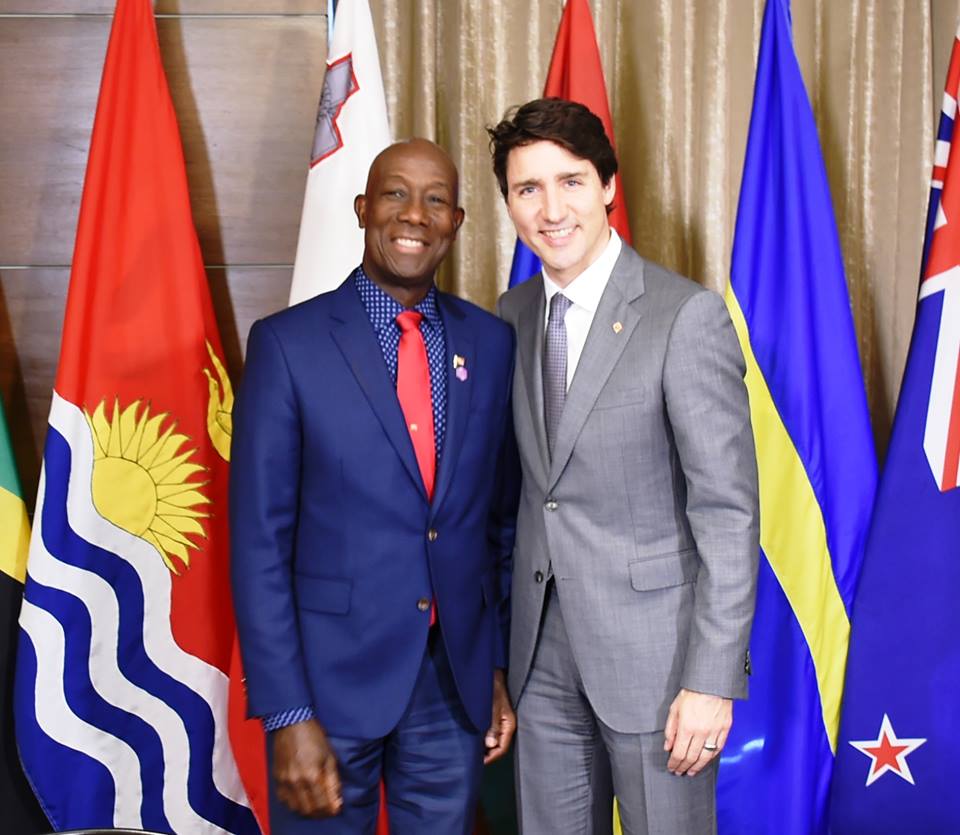
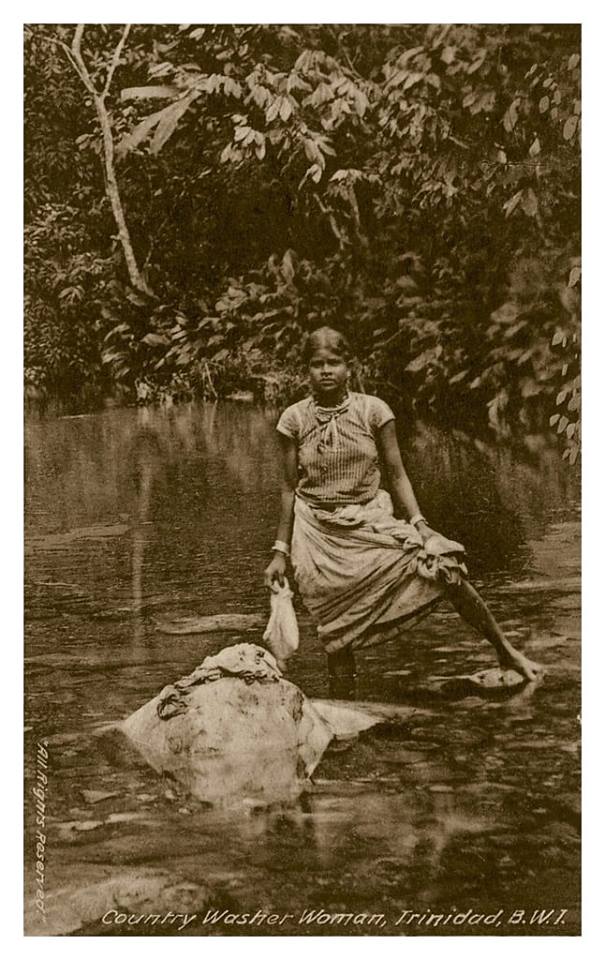
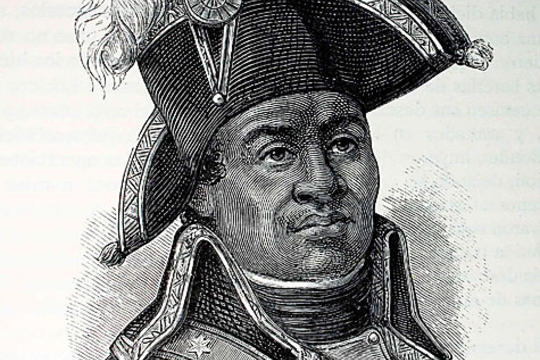
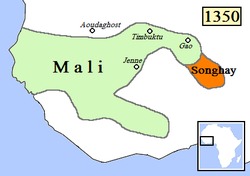
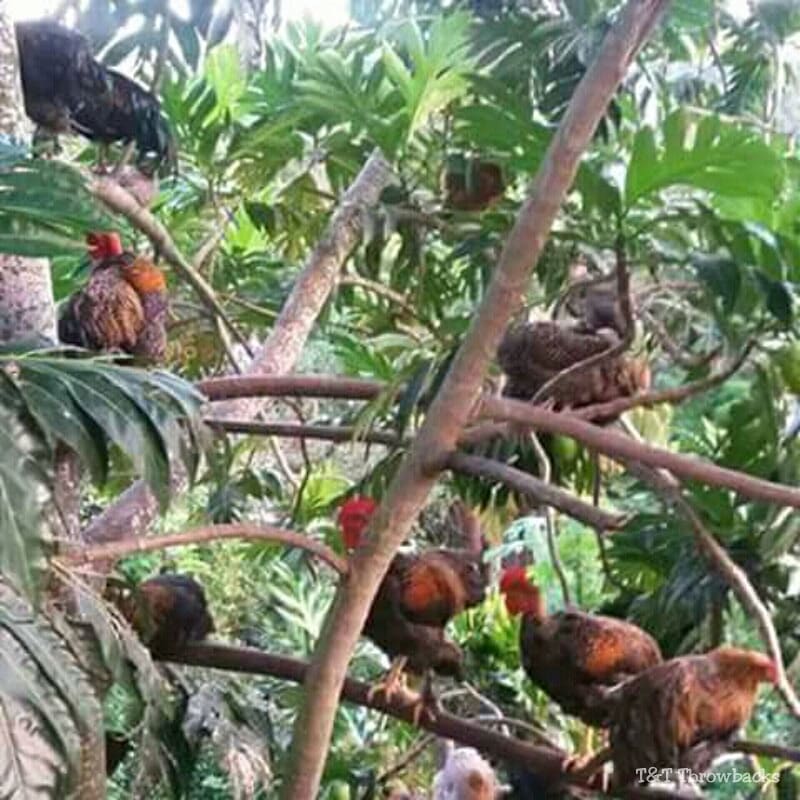
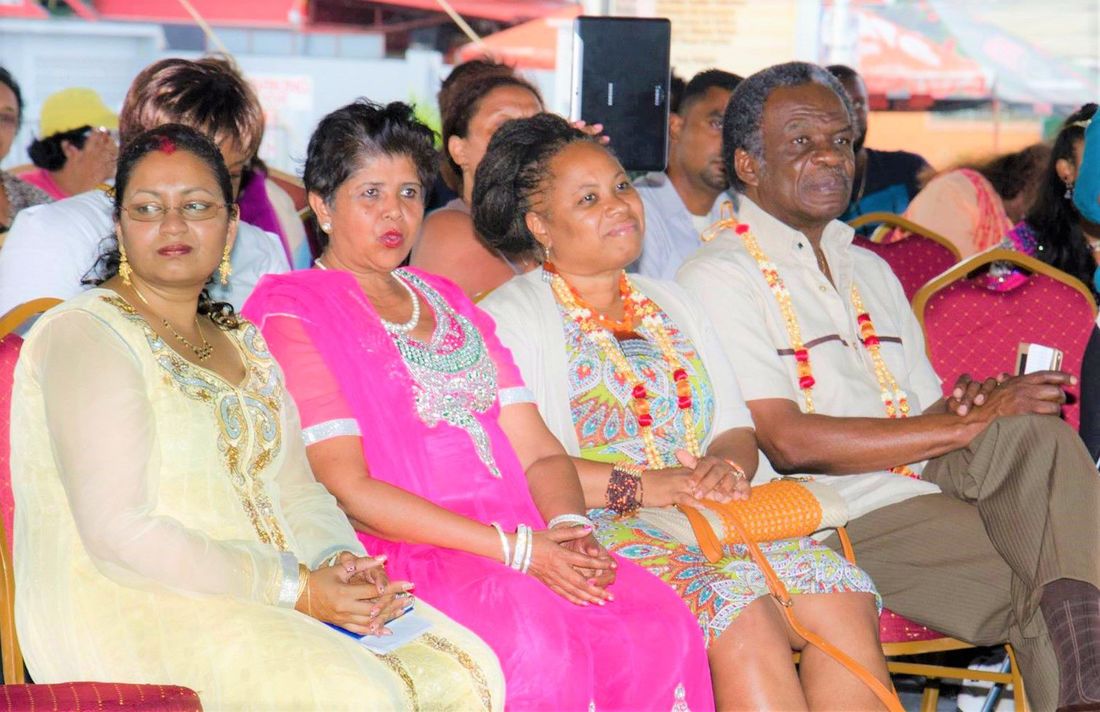
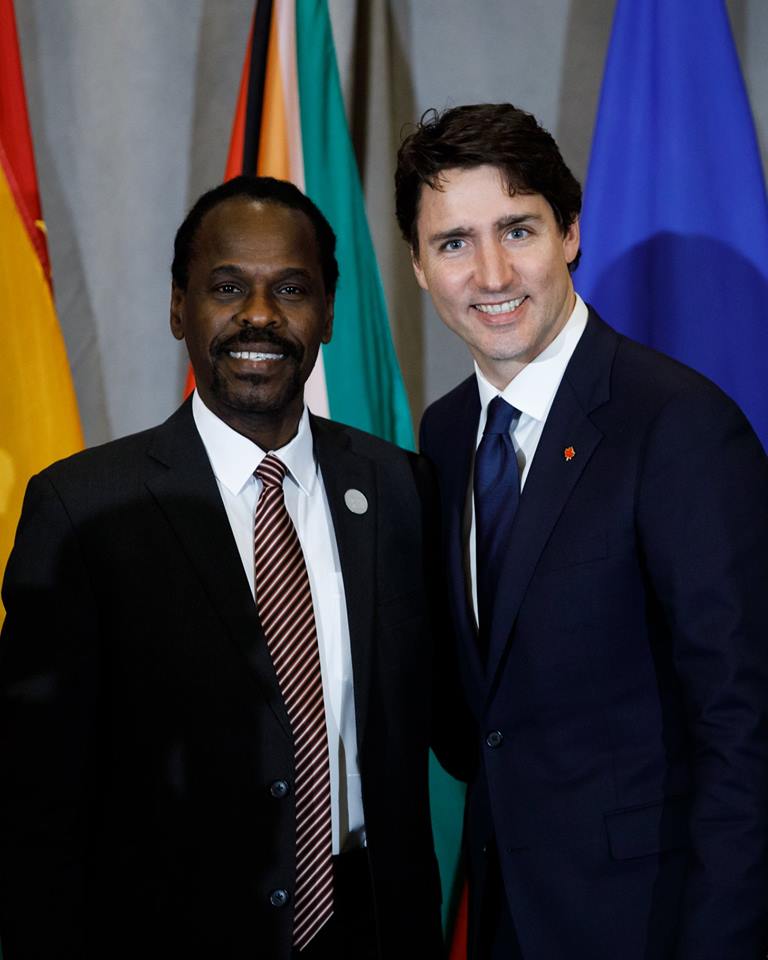

 RSS Feed
RSS Feed